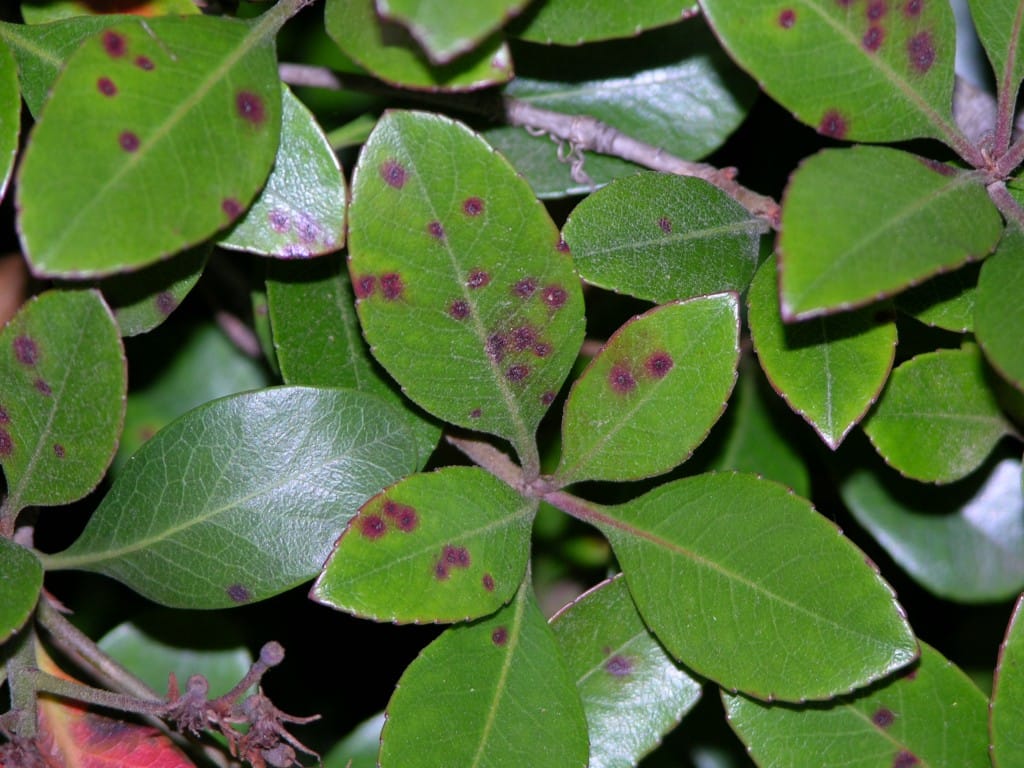Source(s): Jacob G Price
Fungal leaf spots are abundant throughout Coastal Georgia landscapes. Leaf spots can reduce shrubs appeal while also compromising plant health. Red tips, Indian Hawthorne, and Bradford Pears are commonly affected.
Description of Leaf Spot
Small reddish leaf spots initially. As spots age, center is grayish with a purple border. Leaf spots may coalesce causing severe leaf blight. Severely infected leaves drop prematurely. Over time severely infected plants can die.
Favorable Environment for Leaf Spot
This disease is promoted by poor air circulation and prolonged periods of leaf wetness.
Irrigating late in the day or early evening may increase disease severity. Irrigation intended for turfgrass often wets foliage of shrubs, making the problem worse.
Control of Leaf Spot
For Photinia (red tips), prune plants to improve air circulation. Increase plant spacing and avoid wetting foliage. Apply protective fungicide applications when the leaves emerge in the spring and continue at 10-14 day intervals throughout the growing season. Two labeled fungicides for this problem are chlorothalonil (Daconil) and propiconazole (Banner Maxx). Red tips are very vulnerable to entomosporium leaf spot. Fewer fungicides applications may be needed with pear and hawthomes.
Resource(s): Common Landscape Diseases In Georgia
Center Publication Number: 73
- Growing Asparagus: A Luxury Vegetable - September 24, 2013
- Frizzle Top in Sago Palms - September 24, 2013
- Growing Onions in the Home Garden - September 24, 2013
